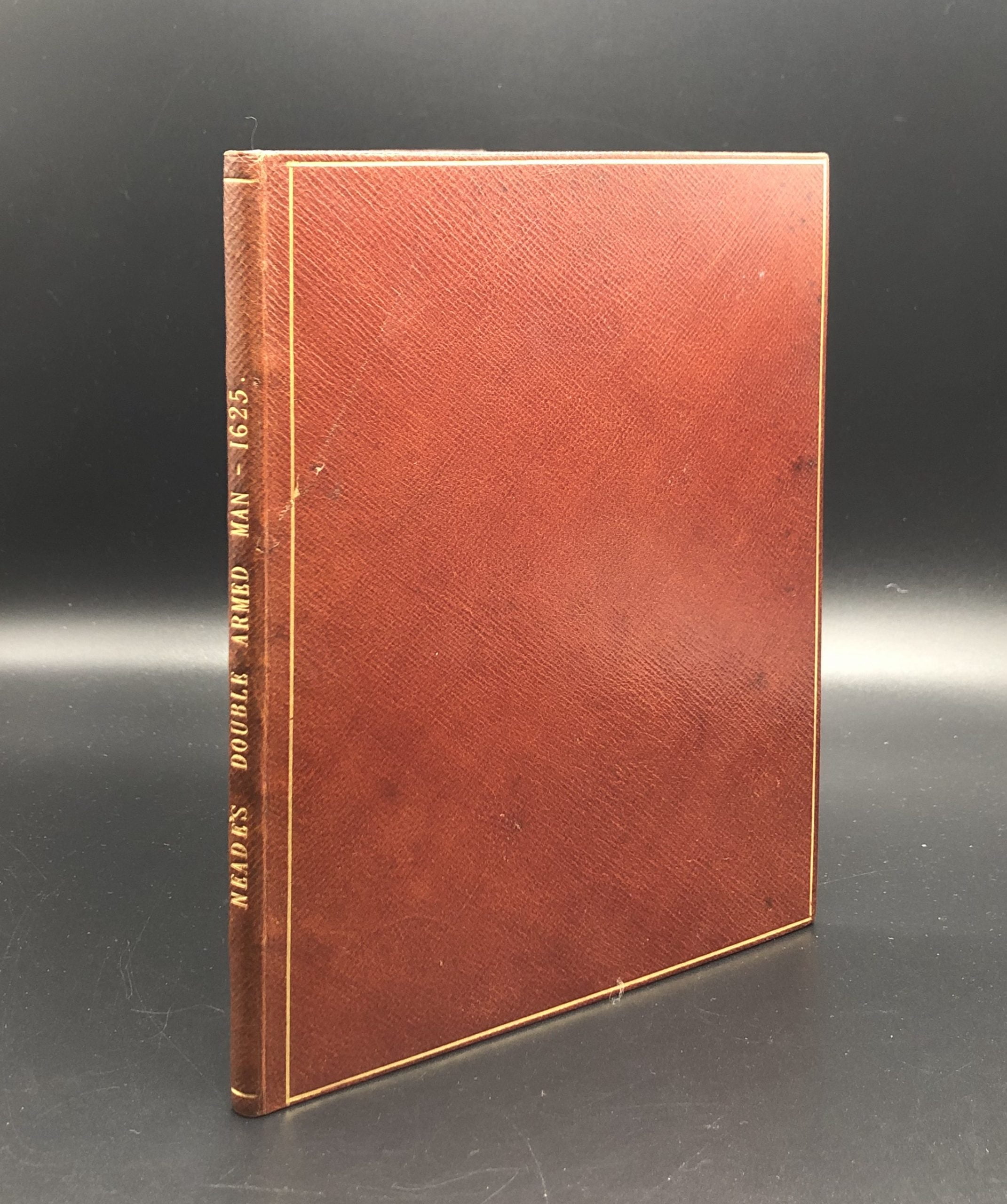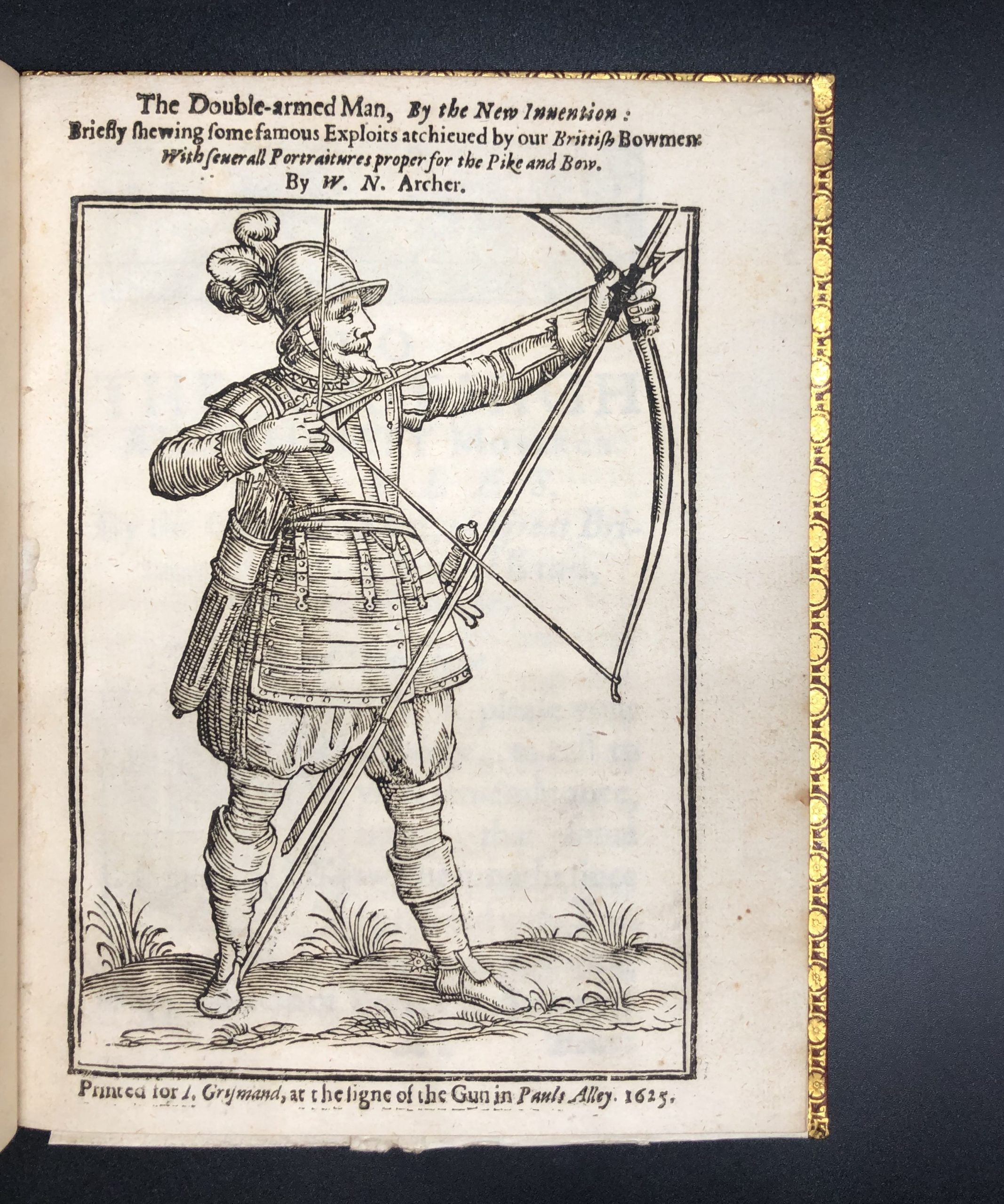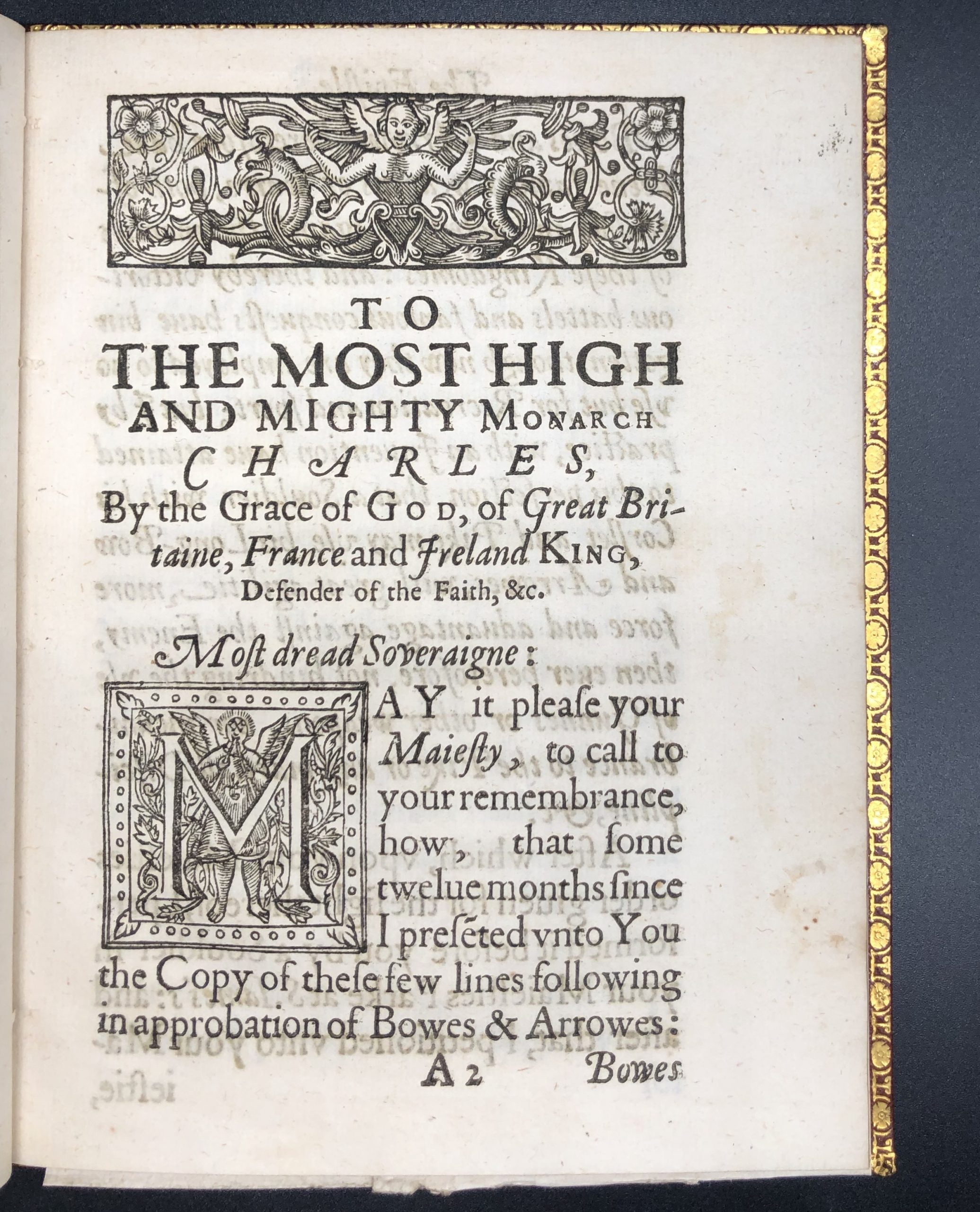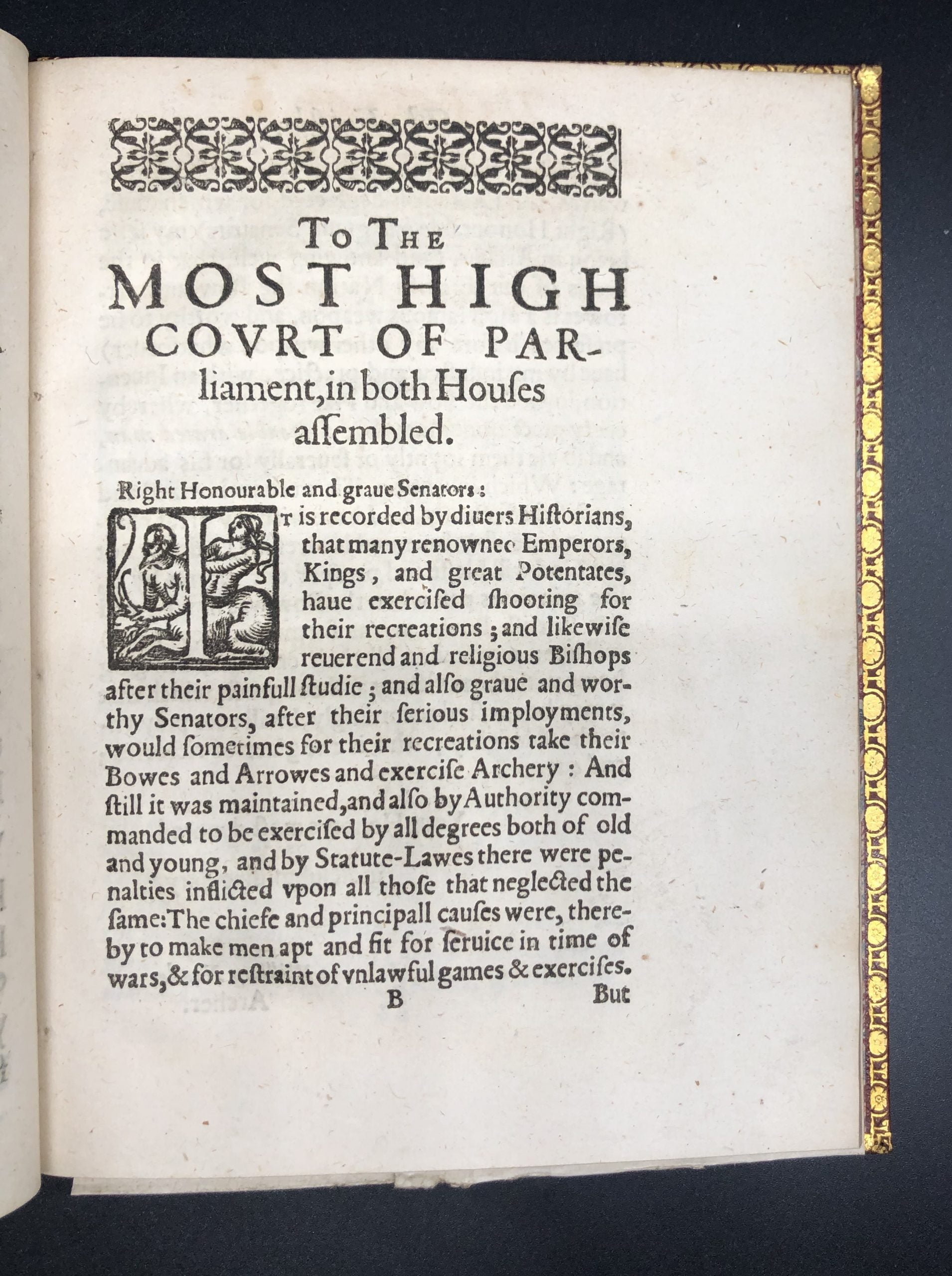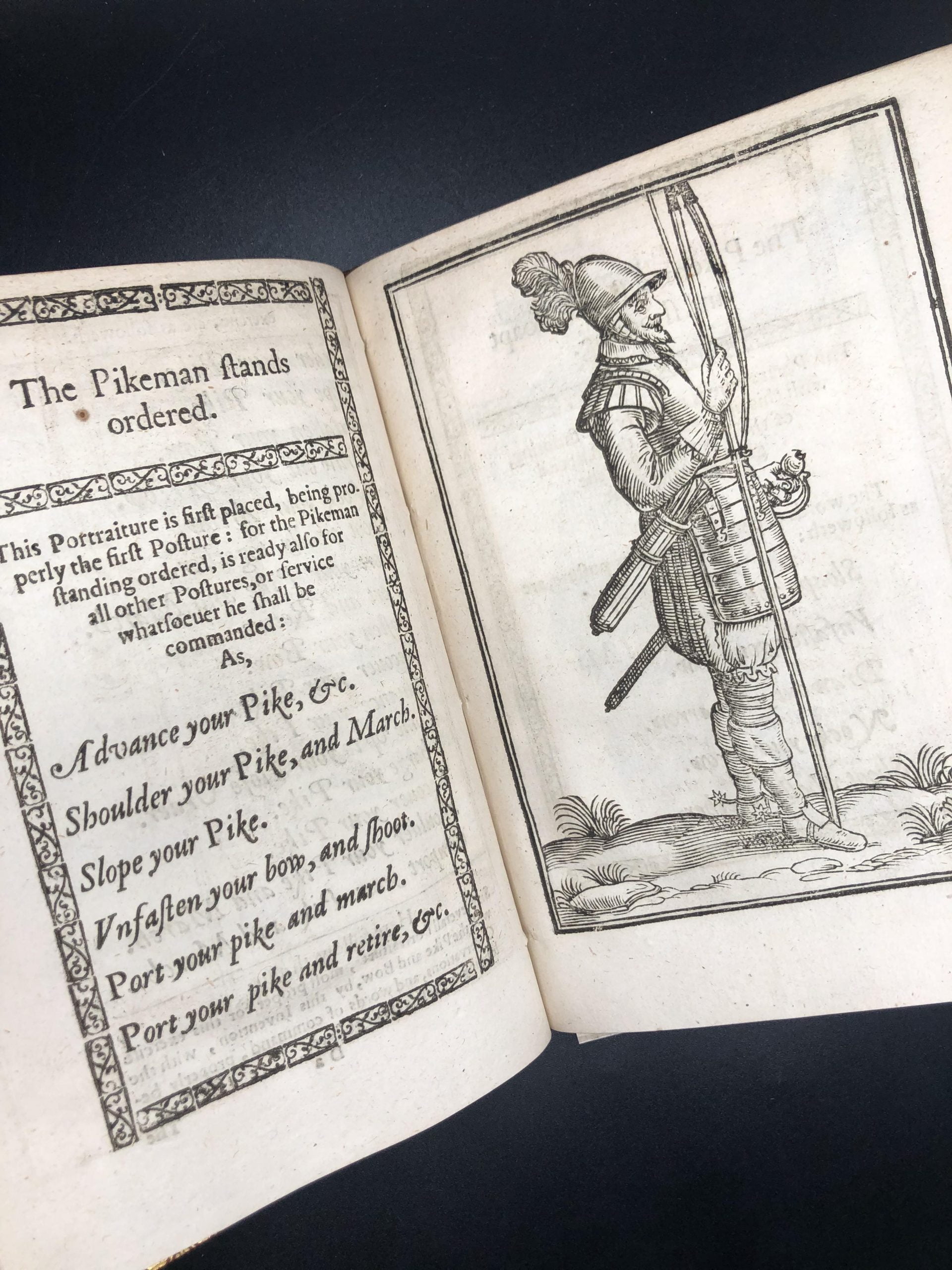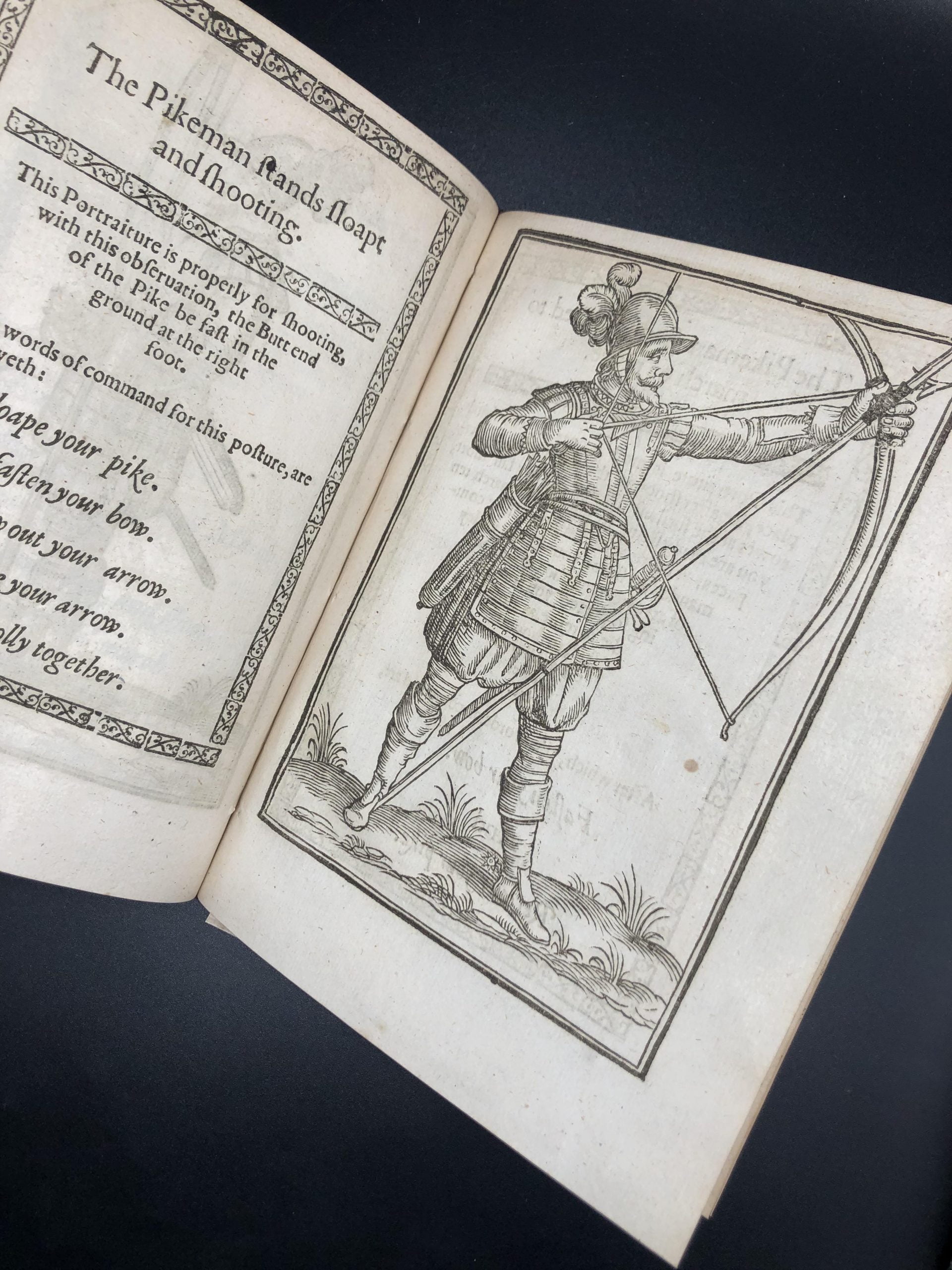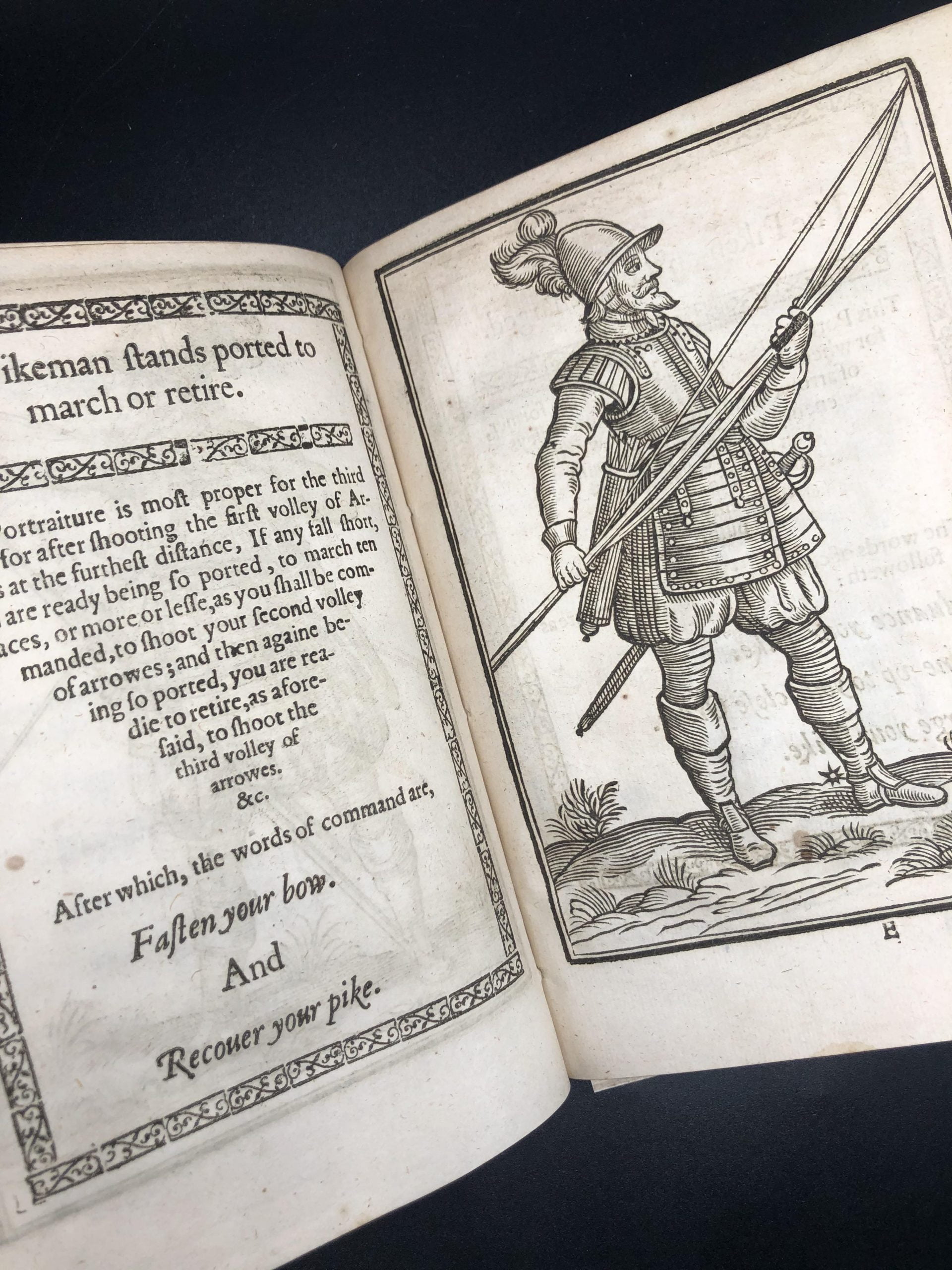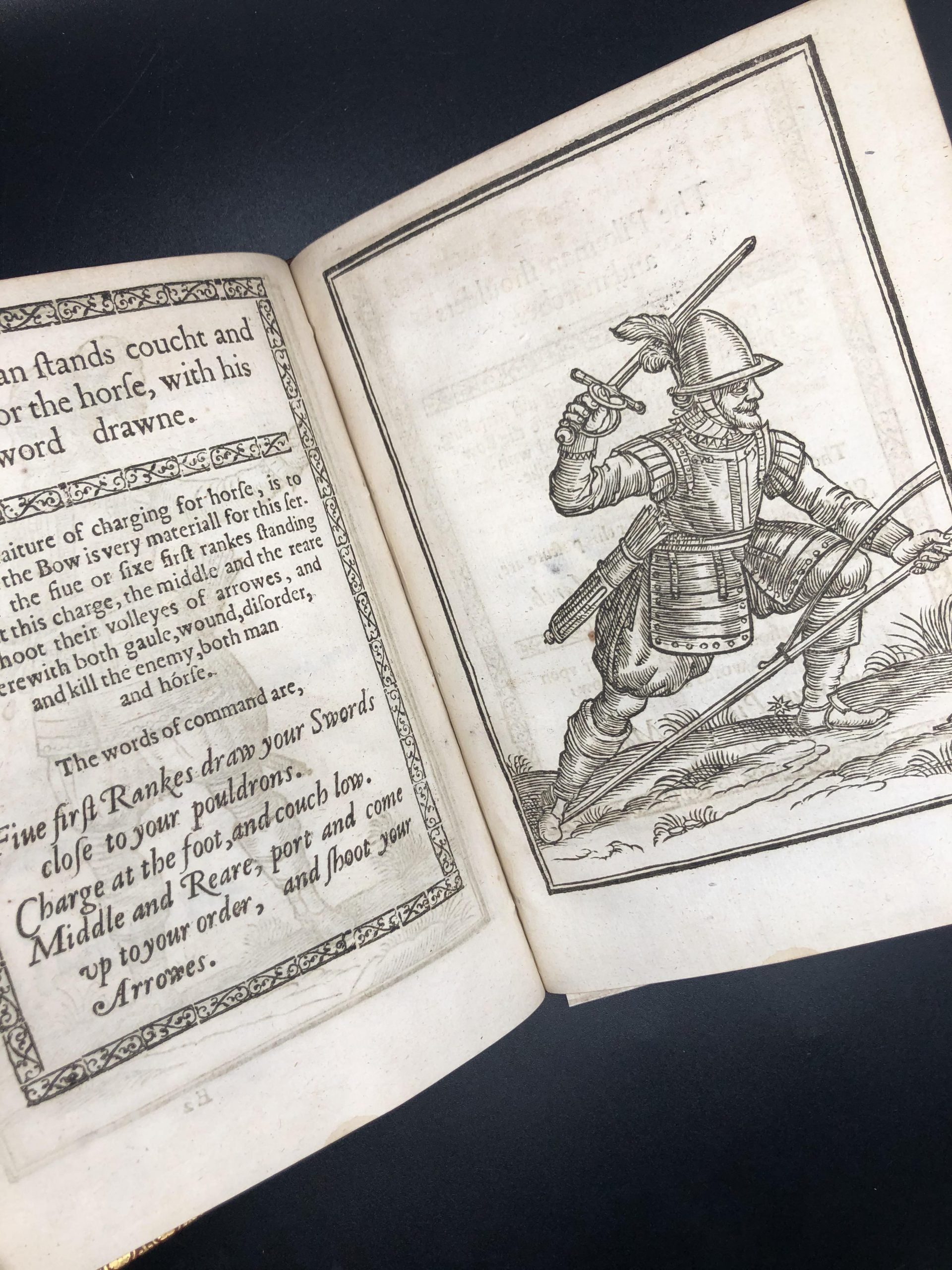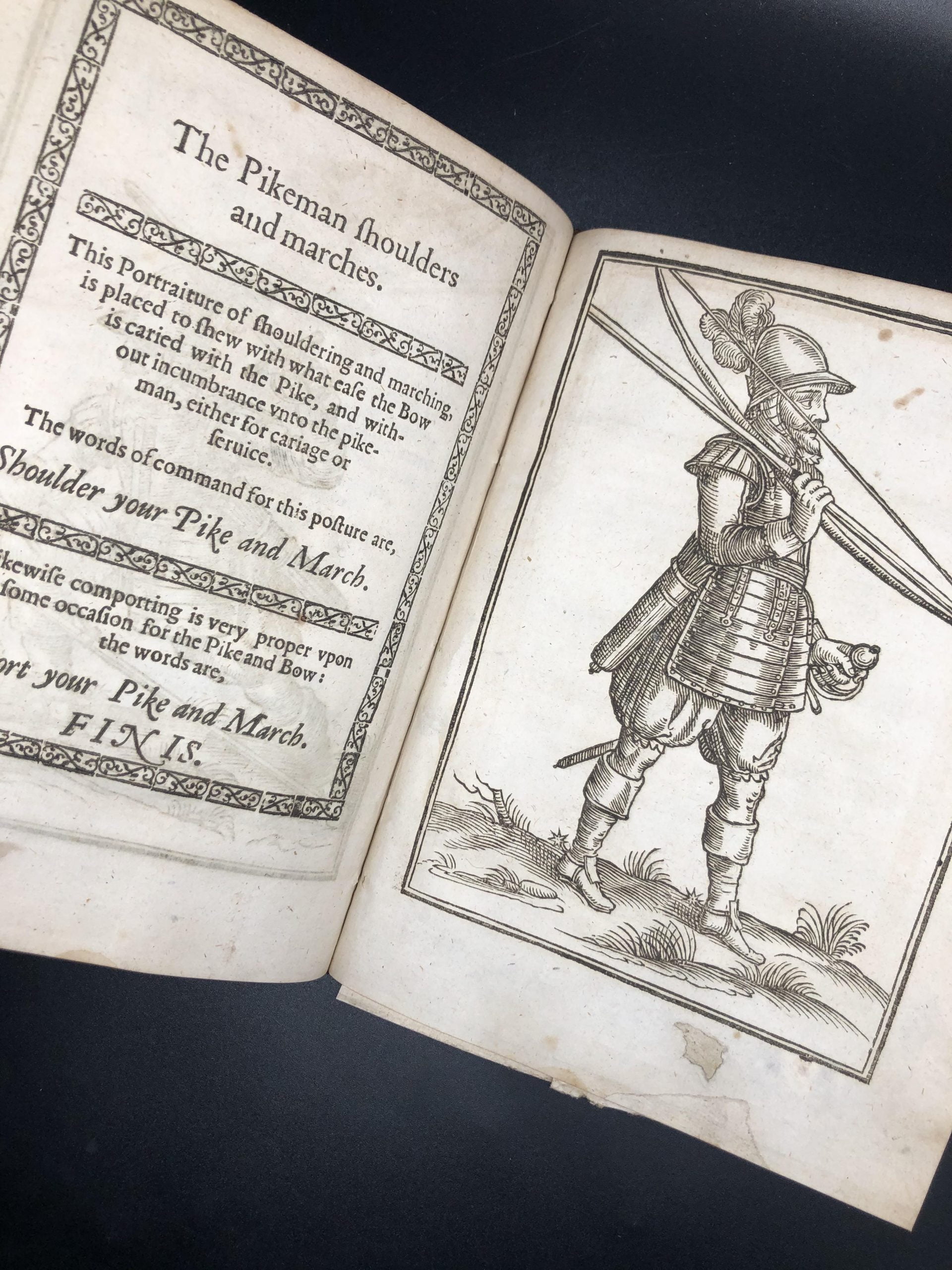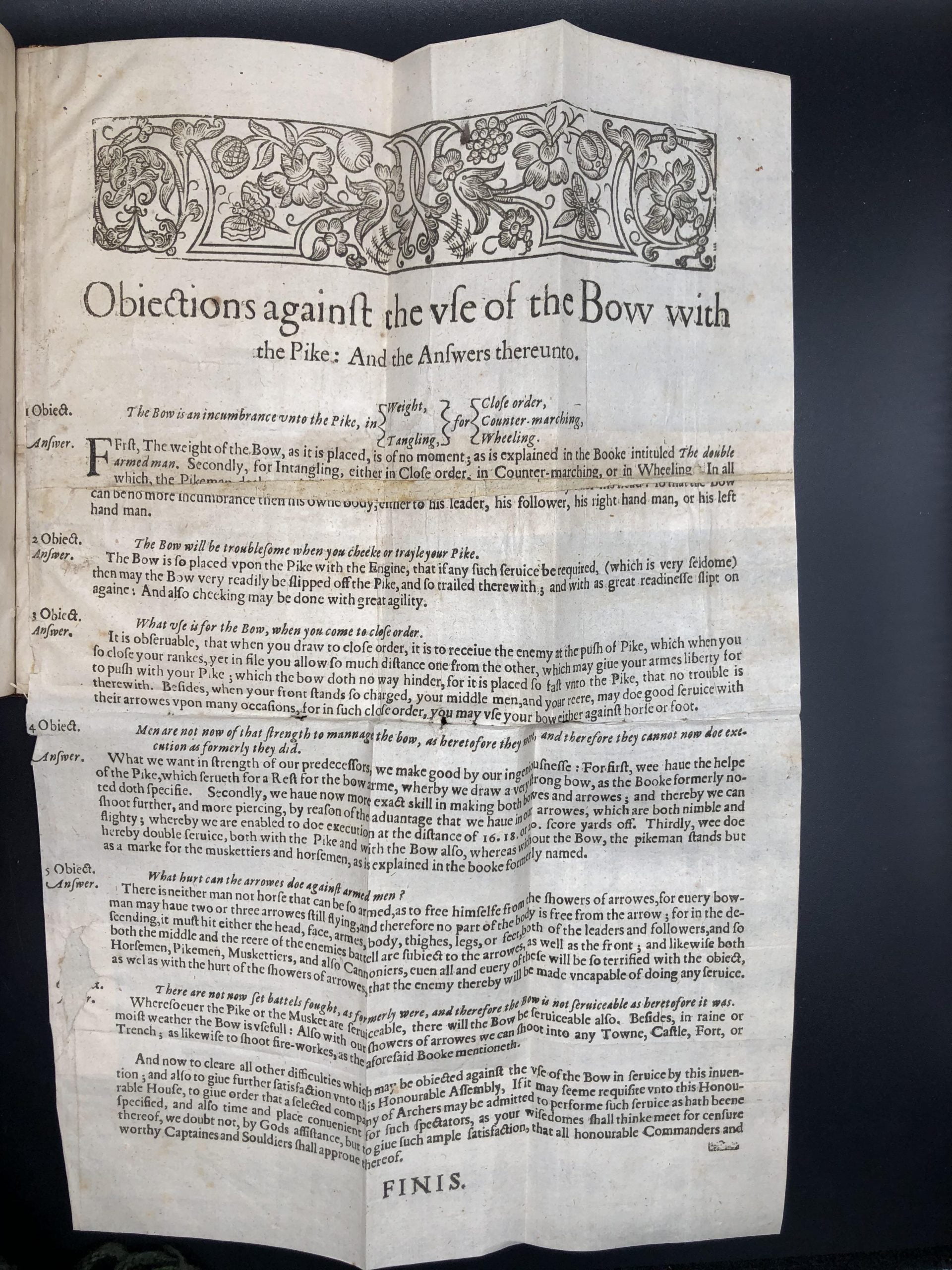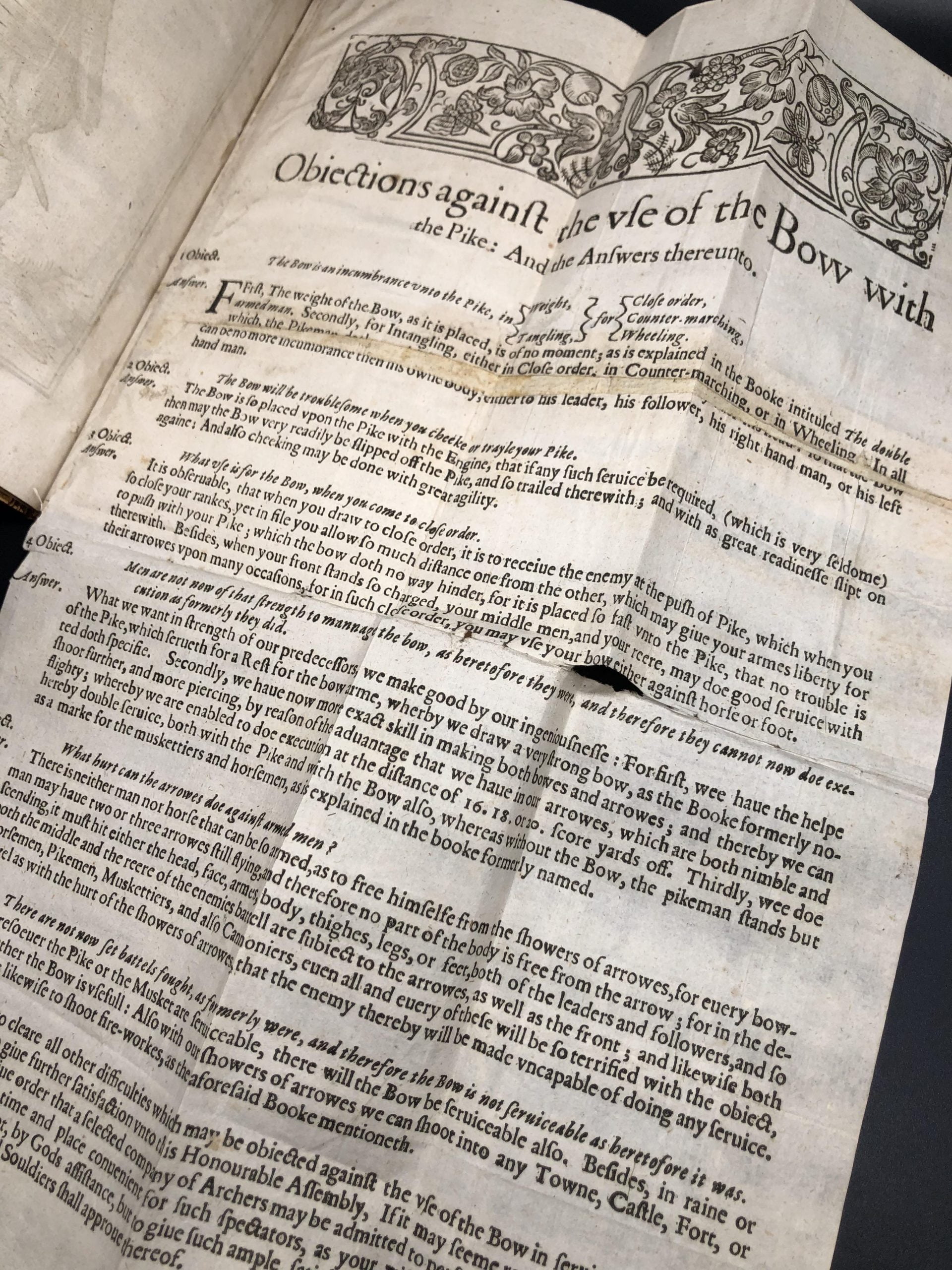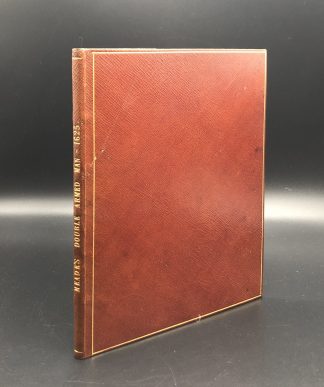NEADE, William
The Double-Armed man, by the New Invention: briefly shewing some famous Exploits atchieved by our Brittish Bowmen: with severall Portraitures [with] Obiections against the vse of the bovv vvith the pike: and the answers thereunto.
[London], by Miles Flesher, printed by W. Jones, 1625, 1630£6,750.00
FIRST EDITION. Two works in one. 4to. 20 unnumbered leaves. A-E . 1 large folding sheet. Roman letter some Italic. Full page woodcut to title, 6 full-page woodcuts of bowmen and pikemen, with printed folding leaf at end, ‘Obiections against the vse of the Bow with the Pike: And the Answers thereunto” with large woodcut headpiece, (one tear restored with loss of letters, other unrestored without loss) historiated woodcut initials, woodcut headpieces and typographical ornaments, gilt leather armorial bookplate label of Henry Huth (1815-1878) and his son Alfred Henry Huth (1850-1910). Light age yellowing, rare very minor marginal spot, small hole restored in lower blank margin of last leaf. A fine copy, in handsome nineteenth-century, straight grained morocco, covers bordered with a gilt rule, title gilt in long on spine, edges and inner dentelles gilt, a.e.g.
A very good copy, with the rare folding sheet ‘Obiections against the vse of the bovv vvith the pike: and the answers thereunto’, of this beautifully illustrated and most interesting work. Neade’s ‘double-armed man’ carried a hybrid pike-cum-bow which he proposed would be a more efficient weapon than the pike on its own. “A year before the publication of this work, Neade presented the manuscript to Charles I, who commanded that the author should exhibit his new weapon in St James’s Park, in his presence; which was done. Neade petitioned the king to make the use of his new invention compulsory, and he and his son were shortly after authorised by proclamation to instruct ‘all those who are fit to exercise arms in the use of the weapon: especially the chiefe officers and all others of our Trayned-bands.’ The author commences with a short history of the occasions on which the bow has been successfully employed in battle, and attempts to refute the objections which had been made against it. His opinion of gunpowder, may be gathered from the following passage: ‘Amongst all which, Bartholdus Swart, the Franciscan Fryer, with his most devillish Invention of Gunpowder, is the most damnable, and from hell itself invented.’ He gives the range of an arrow at from 18 to 20 score yards, and says that six of them could be discharged in the time it took to load and fire one musket. The chief advantage of his combination of bow and Pike was that pikemen, by using their bows, would be able to take part in the preliminary actions of a battle, where before they have been lookers-on only. When the enemy had approached to within about six score yards, the bow was to be fastened to the pike and the ranks closed. If attacked by cavalry, the first five or six ranks were to charge pikes, whilst those in the rear were to continue discharging the arrows. The bow was fastened to the pike at the place where the latter is shouldered.” Cockle.
“Despite the earlier royal encouragement, Neade’s invention was not taken up, the bow having by this time been ousted from the battlefield by the musket. Neade, describing himself and his son as ‘instructors in archery to the king,’ complained to the king in 1637 that, despite several demonstrations of his weapon, he had exhausted his entire estate of £600 to no avail, and that through the bad example of the City of London, archery was now generally neglected. There was no official response to these pleas and, apart from some references to his book, nothing further is known of Neade or his son.” DNB.
A fine copy, well bound.
1) Cockle 106. ESTC S113129. STC 18416. 2) ESTC S113336. STC 18416.3. Not in Cockle.In stock


